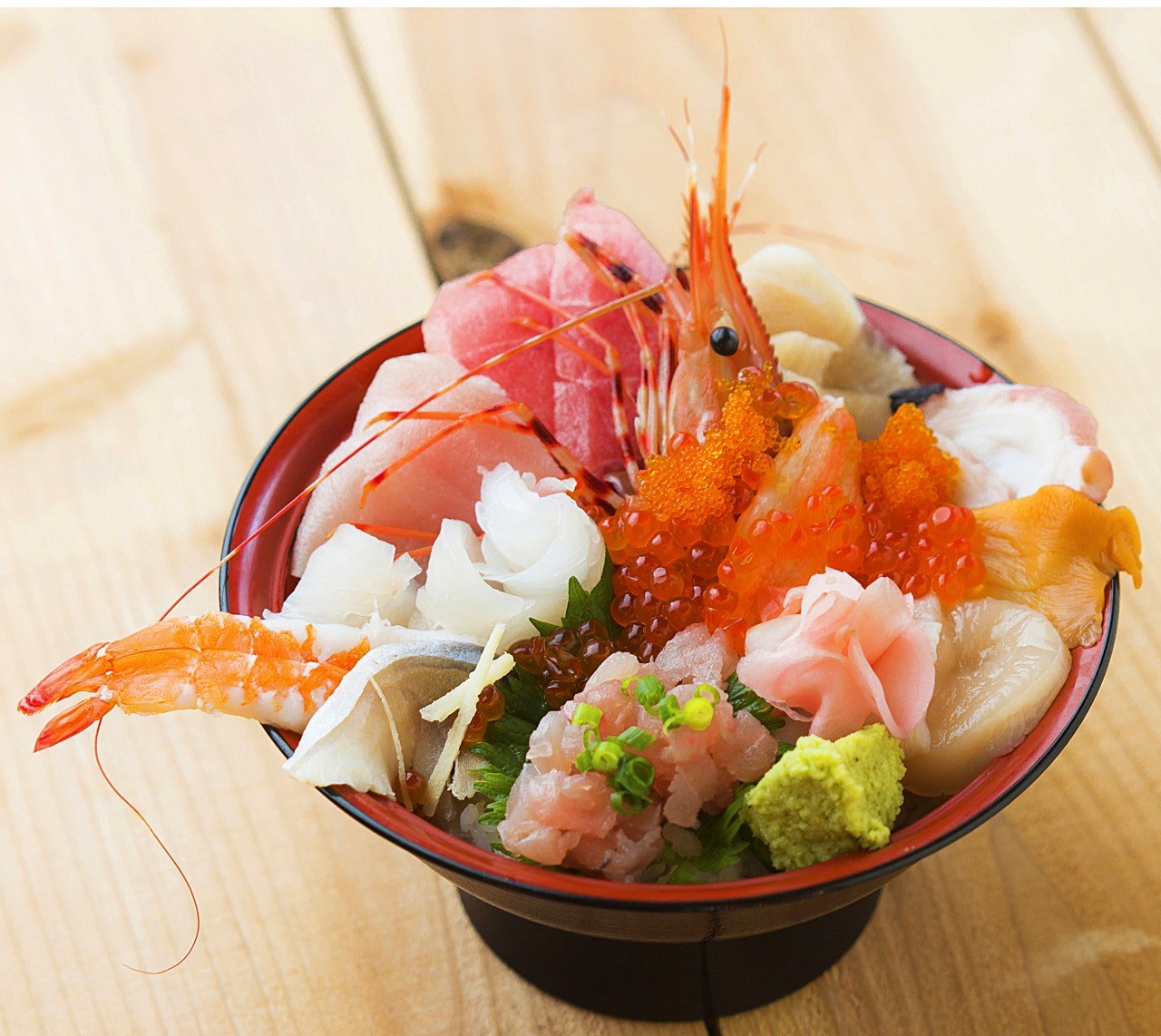Onagawa Town “Kaisendon” (A Bowl of Rice Topped with Seafood), Coho Salmon, Hoya
Eat all the fresh seafood

Onagawa Town maintains a thriving aquaculture industry for oysters, scallops, coho salmon, and sea squirts, and its catch of saury (sanma) is among the highest in Japan. A wide variety of seafood is landed at Onagawa Port off Kinkasan, one of the world’s three largest fishing grounds. Kaisendon, a rice bowl topped with plenty of fresh seafood, is a leading gourmet dish of Onagawa. Restaurants in the town serve their own unique seafood rice bowls, earning a reputation for volume and tastiness.
■Coho SalmonMinamisanriku Town has a long history of aquaculture, and in 1975, the Shizugawa district of Minamisanriku Town began farming coho salmon for the first time in the world. Currently, about 90% of this salmon farmed in Japan, known as ginzake, is produced in Miyagi Prefecture. While preserving a rich sea environment suitable for aquaculture, local fishermen have improved fish feed and aquaculture techniques, resulting in high-quality salmon. The salmon that undergoes a process called shinkei-jime to maintain freshness when landed is branded as “Miyagi Salmon” and is popular for eating raw as sashimi.
■Hoya
Hoya, also called “the pineapple of the sea” because of its distinctive shape, is one of the leading marine products of Sanriku. The most common dishes using hoya (sea squirts) are sashimi and vinegared dishes, but the Ishinomaki area has a traditional dish called hoya-zoni (rice cakes in soup with dried sea squirt and vegetables). As well as an ingredient in the dish, hoya are used in the soup stock after they have been salted, grilled, and dried, producing a robust umami flavor without the pungency of seafood. Ingredients in the soup dish may include rehydrated hoya, grilled mochi, vegetables, swirl kamaboko, parsley, and salmon roe. This is a local dish, locally produced for local consumption.
■Coho SalmonMinamisanriku Town has a long history of aquaculture, and in 1975, the Shizugawa district of Minamisanriku Town began farming coho salmon for the first time in the world. Currently, about 90% of this salmon farmed in Japan, known as ginzake, is produced in Miyagi Prefecture. While preserving a rich sea environment suitable for aquaculture, local fishermen have improved fish feed and aquaculture techniques, resulting in high-quality salmon. The salmon that undergoes a process called shinkei-jime to maintain freshness when landed is branded as “Miyagi Salmon” and is popular for eating raw as sashimi.
■Hoya
Hoya, also called “the pineapple of the sea” because of its distinctive shape, is one of the leading marine products of Sanriku. The most common dishes using hoya (sea squirts) are sashimi and vinegared dishes, but the Ishinomaki area has a traditional dish called hoya-zoni (rice cakes in soup with dried sea squirt and vegetables). As well as an ingredient in the dish, hoya are used in the soup stock after they have been salted, grilled, and dried, producing a robust umami flavor without the pungency of seafood. Ingredients in the soup dish may include rehydrated hoya, grilled mochi, vegetables, swirl kamaboko, parsley, and salmon roe. This is a local dish, locally produced for local consumption.
- Address
- Telephone Number
- 0226-47-2550
- Opening Times
- Prices
- Duration
- Notes